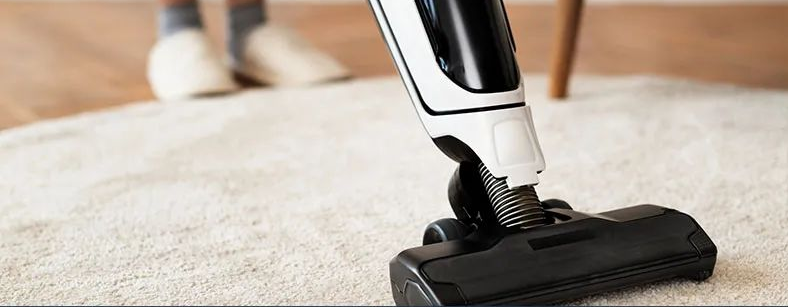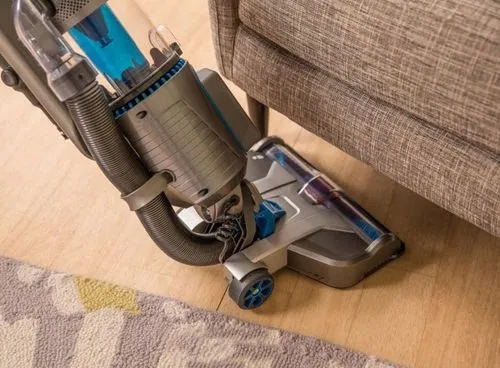Regarding vacuum cleaner safety standards, my country, Japan, South Korea, Australia, and New Zealand all adopt the International Electrotechnical Commission (IEC) safety standards IEC 60335-1 and IEC 60335-2-2; the United States and Canada adopt UL 1017 "Vacuum cleaners, blowers" UL Standard For Safety Vacuum Cleaners, Blower Cleaners, And Household Floor Finishing Machines.

Standard table of different countries for export of vacuum cleaners
1. China: GB 4706.1 GB 4706.7
2. European Union: EN 60335-1; EN 60335-2-2
3. Japan: JIS C 9335-1 JIS C 9335-2-2
4. South Korea: KC 60335-1 KC 60335-2-2
5. Australia/New Zealand: AS/NZS 60335.1; AS/NZS 60335.2.2
6.United States: UL 1017
The current safety standard for vacuum cleaners in my country is GB 4706.7-2014, which is equivalent to IEC 60335-2-2:2009 and used in conjunction with GB 4706.1-2005.

GB 4706.1 stipulates general provisions for the safety of household and similar electrical appliances; while GB 4706.7 sets requirements for special aspects of vacuum cleaners, mainly focusing on the protection against electric shock, power consumption, overload temperature rise, leakage current and Electrical strength, work in humid environment, abnormal operation, stability and mechanical hazards, mechanical strength, structure, technical guide for export commodities vacuum cleaner components, power connection, grounding measures, creepage distances and clearances, non-metallic materials, Aspects of radiation toxicity and similar hazards are regulated.
The latest version of the international safety standard IEC 60335-2-2:2019
The latest version of the current international safety standard for vacuum cleaners is: IEC 60335-2-2:2019. IEC 60335-2-2:2019 new safety standards are as follows:
1. Addition: Battery-powered appliances and other DC-powered dual-power appliances are also within the scope of this standard. Whether it is mains powered or battery powered, it is considered a battery powered appliance when operating in battery mode.
3.1.9 Added: If it cannot be measured because the vacuum cleaner motor stopped working before 20 s, the air inlet can be gradually closed so that the vacuum cleaner motor stops working after 20-0+5S. Pi is the input power in the last 2s before the vacuum cleaner motor is turned off. the maximum value.
3.5.102 Added: ash vacuum cleaner A vacuum cleaner that sucks cold ash from fireplaces, chimneys, ovens, ashtrays and similar places where dust accumulates.
7.12.1 Added:
Instructions for use of an ash vacuum cleaner should include the following:
This appliance is used to extract cold ashes from fireplaces, chimneys, ovens, ashtrays and similar areas where dust accumulates.
WARNING: FIRE HAZARD
— Do not absorb hot, glowing, or burning embers. Pick up only cold ash;
— The dust box must be emptied and cleaned before and after each use;
— Do not use paper dust bags or dust bags made of other flammable materials;
— Do not use other types of vacuum cleaners to collect ash;
— Do not place the appliance on flammable or polymeric surfaces, including carpets and plastic floors.
7.15 Added: Symbol 0434A in ISO 7000 (2004-01) should be adjacent to 0790.
11.3 added:
Note 101: When measuring input power, ensure that the appliance is installed correctly, and the input power Pi is measured with the air inlet closed.
When the accessible outer surface specified in Table 101 is relatively flat and accessible, the test probe in Figure 105 can be used to measure its temperature rise. Use the probe to apply a force of (4 ± 1) N on the accessible surface to ensure as much contact as possible between the probe and the surface.
NOTE 102: A laboratory stand clamp or similar device may be used to secure the probe in place. Other measuring devices may be used that will yield the same results.
11.8 added:
The temperature rise limits and corresponding footnotes for the "casing of electric appliances (except handles held during normal use)" specified in Table 3 are not applicable.
a Metal coatings with a minimum thickness of 90 μm, formed by glazing or non-essential plastic coating, are considered coated metal.
b The temperature rise limits for plastics also apply to plastic materials covered with metal coatings with a thickness less than 0.1 mm.
c When the plastic coating thickness does not exceed 0.4 mm, the temperature rise limits for coated metal or glass and ceramic materials apply.
d The applicable value for a position 25 mm from the air outlet can be increased by 10 K.
e The applicable value at a distance of 25 mm from the air outlet can be increased by 5 K.
f No measurement is performed on surfaces with a diameter of 75 mm that are inaccessible to probes with hemispherical tips.
19.105
Ember vacuum cleaners shall not cause fire or electric shock when operated under the following test conditions:
The ash vacuum cleaner is ready for operation as specified in the instructions for use, but is switched off;
Fill the dust bin of your ash cleaner to two-thirds of its usable volume with paper balls. Each paper ball is crumpled from A4 copy paper with specifications of 70 g/m2 – 120 g/m2 in accordance with ISO 216. Each crumpled piece of paper should fit into a cube with a side length of 10 cm.
Light the paper ball with the burning paper strip located in the center of the top layer of the paper ball. After 1 min, the dust box is closed and remains in place until a stable state is reached.
During the test, the appliance shall not emit flame or melt material.
Afterwards, repeat the test with a new sample, but switch on all vacuum motors immediately after the dust bin is closed. If the ash cleaner has an air flow control, the test should be carried out at maximum and minimum air flow.
After the test, the appliance shall comply with the requirements of 19.13.
21.106
The structure of the handle used for carrying the appliance should be able to withstand the mass of the appliance without being damaged. Not suitable for handheld or battery-operated automatic cleaners.
Compliance is determined by the following test.
The test load consists of two parts: the appliance and the dust collection box filled with dry medium-grade sand complying with the requirements of ISO 14688-1. The load is applied evenly over a length of 75 mm in the center of the handle without clamping. If the dust bin is marked with a maximum dust level mark, add sand to this level. The mass of the test load should gradually increase from zero, reach the test value within 5 s to 10 s, and maintain it for 1 min.
When the appliance is equipped with multiple handles and cannot be transported by one handle, the force should be distributed among the handles. The force distribution of each handle is determined by measuring the percentage of the mass of the appliance that each handle bears during normal handling.
Where an appliance is equipped with multiple handles but can be carried by a single handle, each handle shall be capable of withstanding the full force. For water-absorbent cleaning appliances that rely entirely on hands or body support during use, the maximum normal amount of water filling should be maintained during the quality measurement and testing of the appliance. Appliances with separate tanks for cleaning solutions and recycling should only fill the largest tank to its maximum capacity.
After the test, no damage shall be caused to the handle and its safety device, or to the part connecting the handle to the appliance. There is negligible surface damage, small dents or chips.
22.102
Ash cleaners shall have a tightly woven metal pre-filter, or a pre-filter made of flame-retardant material as specified in GWFI in 30.2.101. All parts, including accessories in direct contact with the ash in front of the pre-filter, shall be made of metal or of non-metallic materials specified in 30.2.102. The minimum wall thickness of metal containers should be 0.35 mm.
Compliance is determined by inspection, measurement, the tests of 30.2.101 and 30.2.102 (if applicable) and the following tests.
A force of 3N is applied to the type C test probe specified in IEC 61032. The test probe shall not penetrate the tightly woven metal pre-filter.
22.103
Ember vacuum hose lengths should be limited.
Determine compliance by measuring the length of the hose between the normal hand-held position and the entrance to the dust box.
The fully extended length should not exceed 2 m.
30.2.10
The glow wire flammability index (GWFI) of the dust collection box and filter of the ash vacuum cleaner should be at least 850 ℃ in accordance with GB/T 5169.12 (idt IEC 60695-2-12). The test sample should not be thicker than the relevant ash vacuum cleaner. part.
As an alternative, the glow wire ignition temperature (GWIT) of the dust box and filter of the ember vacuum cleaner should be at least 875°C in accordance with GB/T 5169.13 (idt IEC 60695-2-13), and the test sample should not be thick Relevant parts for ash vacuum cleaners.
Another alternative is that the dust box and filter of the ash vacuum cleaner are subjected to the glow wire test of GB/T 5169.11 (idt IEC 60695-2-11), with a test temperature of 850 °C. The difference between te-ti should not be greater than 2 s.
30.2.102
All nozzles, deflectors and connectors in ash cleaners located upstream of the pre-filter made of non-metallic materials are subjected to the needle flame test in accordance with Appendix E. In the case where the test sample used for classification is not thicker than the relevant parts of the ash cleaner, parts whose material category is V-0 or V-1 according to GB/T 5169.16 (idt IEC 60695-11-10) are not subjected to needle flame test.
Post time: Feb-01-2024





